Small collection of personal projects related to (mostly real time) computer graphics, simulation and animation. Written in C++17, uses Vulkan as graphics api (no other backends, no huge abstraction layers). The goal here isn't to write a full graphics engine (although this repo probably contains lots of typical engine functionality by now) but rather to develop an environment for extremely quick prototyping of small, mostly independent 2D and 3D apps for topics I'm currently interested in.
Most of the projects are work in progess and were mainly written for the purpose of learning and playing around with. So while they may be useful as a resource of learning, they usually leave quite some room for improvement. Often, files (especially the main file of a project) contains various notes, todos and ideas about what could be done next though (or what is broken at the moment). List of projects with some sample screenshots (noninclusive):
- automaton: experiments with cellular automata (hexagonal grid)
- bezier: simple playground for 3D bezier curves, b-splines and anything
related to it.
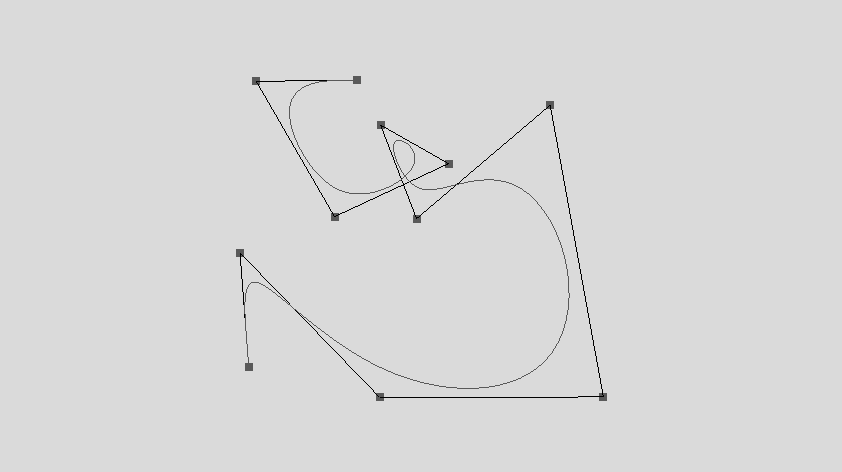
- br: minimal gltf pbr forward renderer (including IBL). Most other 3D (forward) rendering projects are built from this. Currently also contains some 3D audio experiments using steamaudio, simulating indirect environmental audio effects in realtime.
- cloth: Simple 3D cloth animation using verlet integration, includes cpu and
gpu variants.
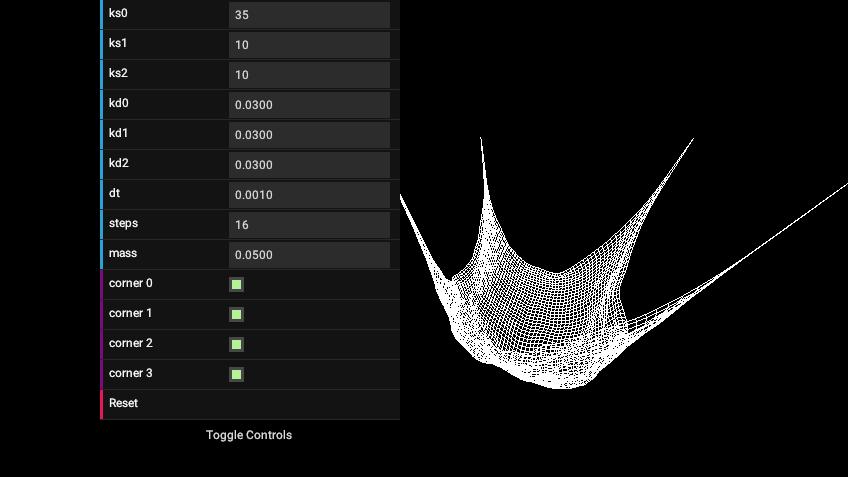
- deferred: deferred renderer implementing various (mainly screen space)
effects. Bloom, SSR, SSAO, Luminance based exposure adaption,
volumetric light scattering, simple DOF, lens flare, FXAA. HDR pipeline using pbr concepts (for
lightning, most screen space algorithms are still roughly approximated
to what looks acceptable. Work in progress)

- fluids: fluid simulation on the gpu
(somewhat outdated, heard a lecture on it since then, to be reworked
hopefully sooner than later). The screenshot shows the HSV-visualized
velocity field.
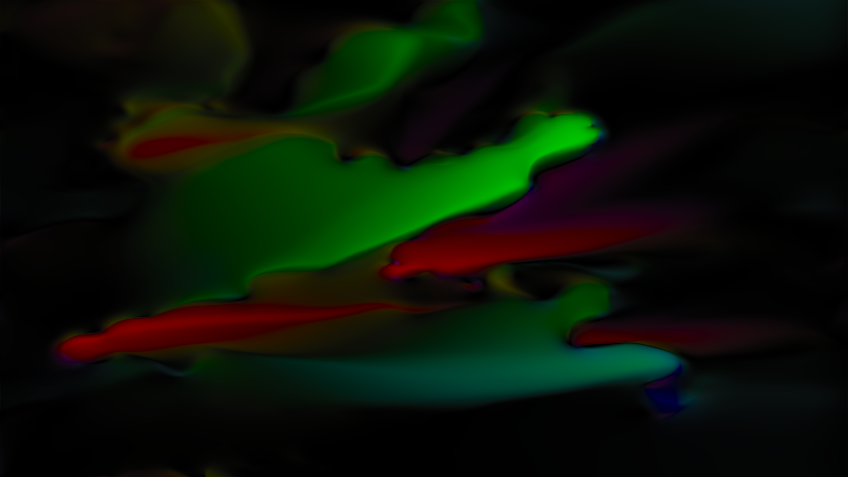
- iro: small game idea based on cellular automata.
Uses the floating point determinism defined by vulkan spirv shaders
to serialize/synchronize over a small udp protocol (wip).
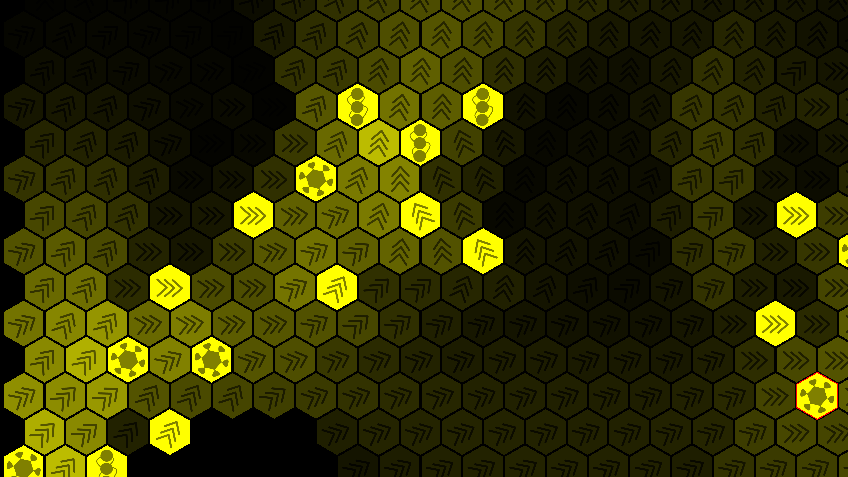
- iv: simple image viewer using the shared image functionality. Can view default file types as well as supported KTX files (with all mipmaps and array layers). Can also visualize cubemaps.
- lpgi: light probe based global illumination, using spherical harmonics.
Light probes can be set and refreshed at runtime, simulating
multiple light bounces
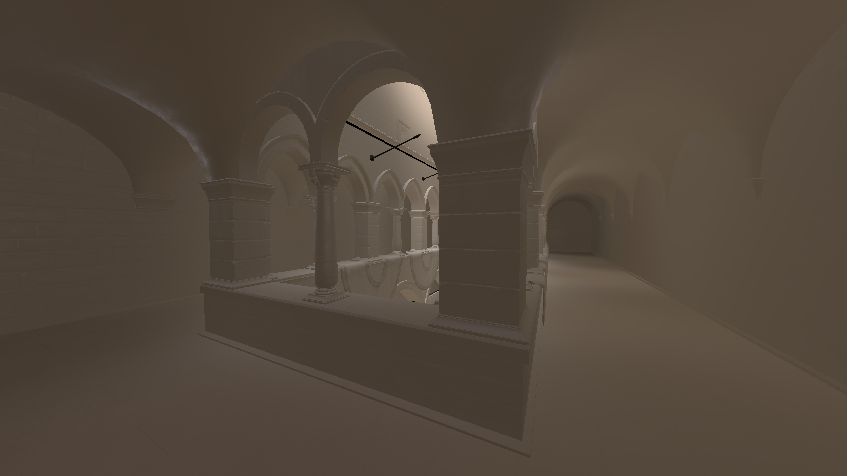
- normals: implements the purely 2D normal mapping effect as described here
- particles: simple 2D particle system using the mouse
as attractor. Built for scalability, can run many million particles
even on not high-end hardware (the screenshot shows
10 million transparent particles). Can also function as an audio
visualizer (for audio files or system audio on linux via pulse) using
the particles, varying the attraction based on particle properties
and current audio frequencies.
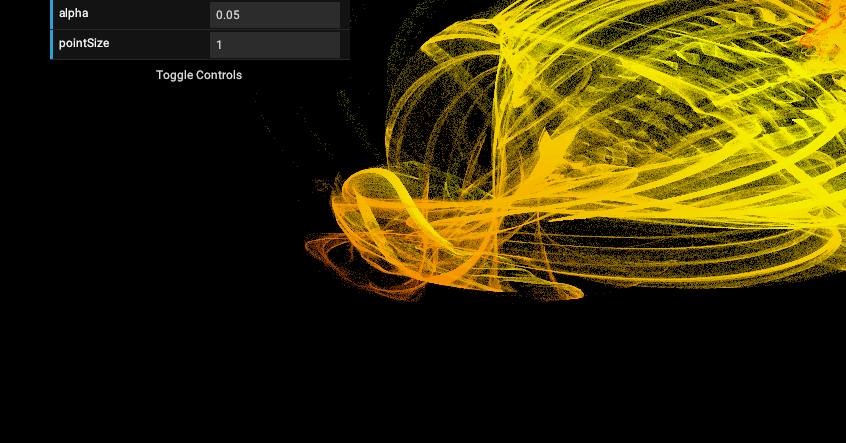
- gen: command line utility program for stuff required by the pbr renderer projects, like generating cubemaps from equirectangular environment maps, baking irradiance maps or specular IBL maps and the brdf lookup table for the split-sum approximation. Can also project a cubemap to spherical harmonics coefficients (9x) or bake multiple daytime layers and metadata of a Hosek-Wilkie sky cubemap.
- pendulum: simulation of a simple pendulum from an exercise in a
computational engineering and robotics lecture i heard.
The challenge is to keep the pendulum standing upwards (unstable stationary
solution of the underlying differential equation)
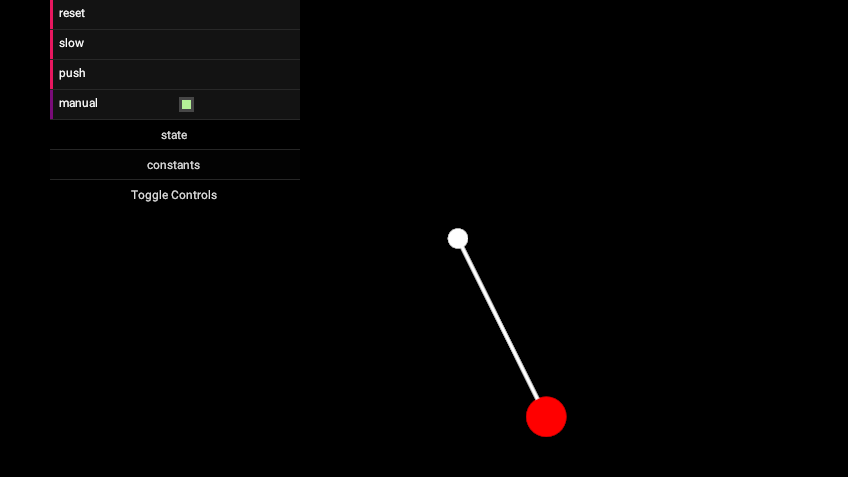
- pursuers: small system of particle pursuers resulting in interesting
patterns

- rays: 2D light model, rendered using a ray/path tracing approach and line
rendering.

- repro: first prototype of a game with visual perception based on taking
snapshots of the current view and then depth-reprojecting it as one is
moving through it
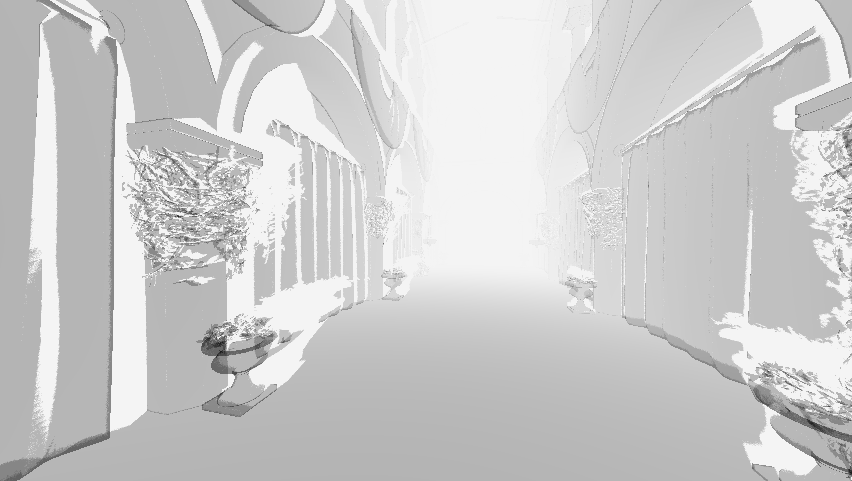
- Simulation of light scattering (rayleigh + mie) through the atmosphere.
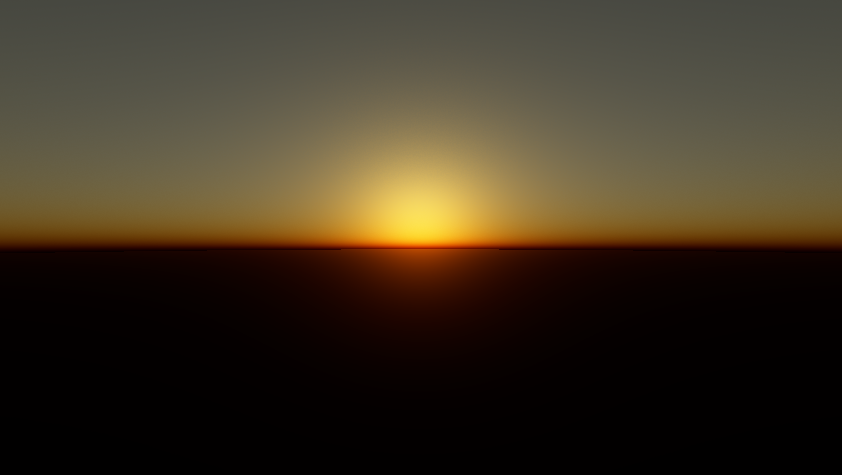 Also allows moving out of the planets atmosphere, observing it from space.
Uses a quaternion-based free-moving camera to allow intuitive space movement
(since there is no "up" direction in space).
Also allows moving out of the planets atmosphere, observing it from space.
Uses a quaternion-based free-moving camera to allow intuitive space movement
(since there is no "up" direction in space).

- sen: first raytracing and path tracing experiments (mainly a cornell-box), done via compute shaders (or similar methods) on the gpu. Not even physically-based yet, just playing around with the basic concepts.
- shv: visualize spherical harmonics coefficients
- smooth_shadow: analytical 2D smooth shadows via shadow polygons
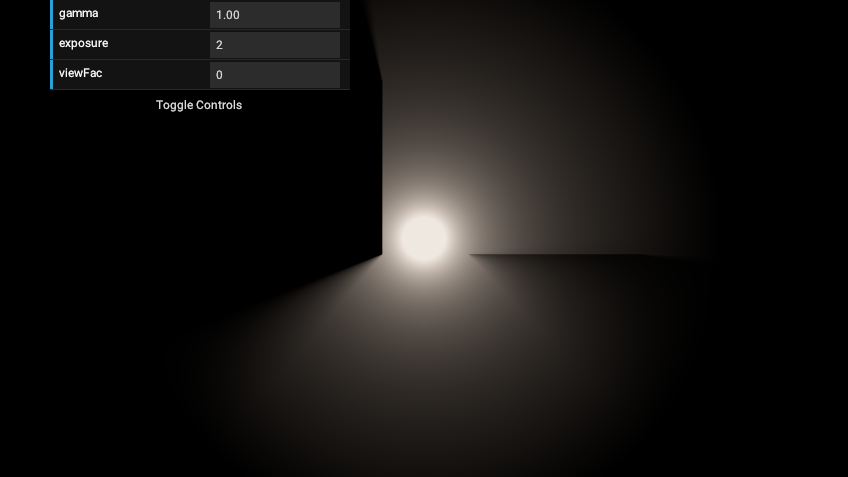
- sss: Comparable to smooth_shadow but uses a subsurface-scattering-like effect to achieve smooth shadows, i.e. the strength of light is "reduced" when traveling through an object
- taa: 3D temporal antialiasing renderer (supporting dynamic scenes) playground for different effects that have a synergy with TAA (mainly based on noise) like stochastic transparency and noisy shadow sampling via a poisson disk
- tess: Playground for tessellation. Ditched in favor of the dynamic subdivision using compute shaders.
- volume: volume rendering (mainly of 3D functions, no standard
3D texture/volume file format supported yet) via marching cubes
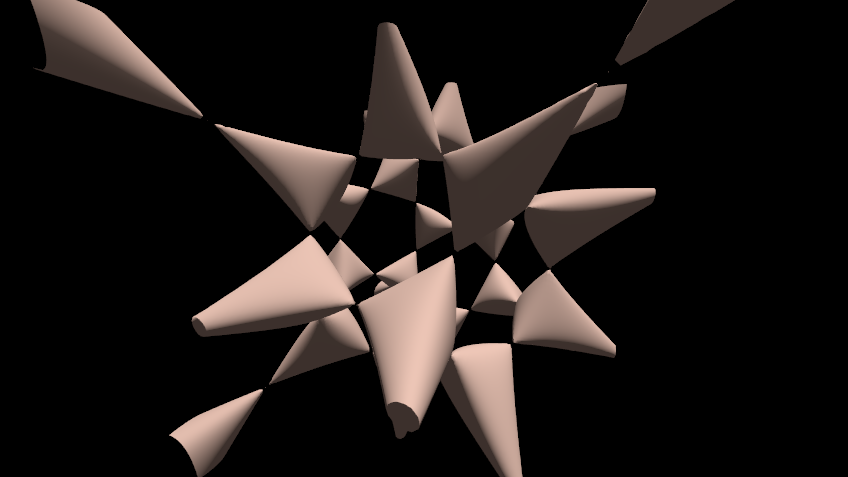
- subd: Dynamic terrain subdivision based on the 2018 paper "Adaptive GPU
Tessellation with Compute Shaders" by Jad Khoury, Jonathan Dupuy, and
Christophe Riccio. Renders a whole planet with free-moving quaternion camera.
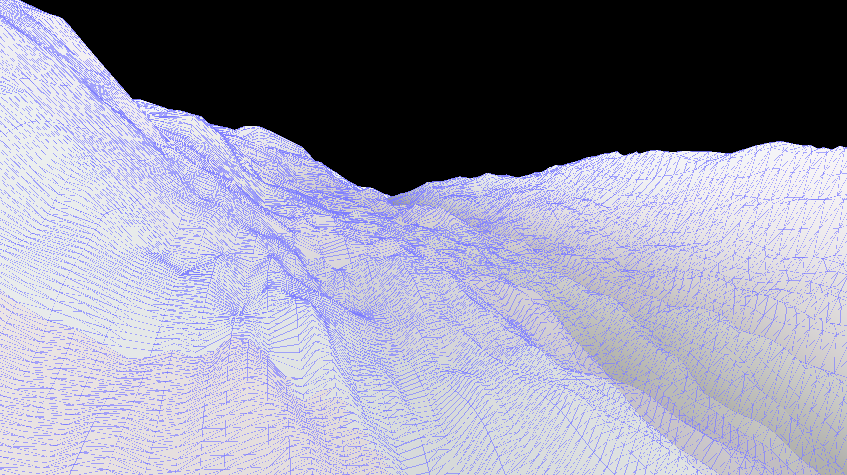
There is some shared code between the projects (like an image loading library,
gltf scene loading and management, various small rendering and computation
helpers as well as general C++ utility that I haven't found a better
place for yet, e.g. 16-bit floats) which is located in the tkn/
subfolder, compiled into libtkn.
The gui in all the screenshots uses my (at the time of writing quite experimental) vulkan-only and retained-mode gui toolkit vui. As you can see in some screenshots, it includes a component roughly modeled after the excellent dat.gui.
Unless stated otherwise, the code (in src) is available under the MIT license,
see LICENSE. Some projects (mainly the ones where some time was invested
or new techniques developed, like rays, repro, iro or smooth-shadow) may
use GPL or other licenses, they have their own LICENSE file in their src/ folder then.
Additional external licenses for distributed code/assets:
assets/LiberationSans-*.ttf: SIL Open Font License 1.1assets/Roboto-*.ttf: Apache License, Version 2.0assets/OpenSans-*.ttf: Apache License, Version 2.0assets/gravel_*: CC0, from https://cc0textures.com/view.php?tex=Gravel08
The files in assets/gltf have their copyright embedded.
The projects in external have their licenses included into the files
or in the external/licenses folder.
On windows: meson build/win --backend ninja, using the latest MinGW (at least gcc 8.x).
Linking shared libraries in different folders on windows is somewhat problematic
since there is no RPATH equivalent on windows. Therefore you have to do one of the following
things for applications to work out of the box (otherwise you'll get libXXX.dll is missing
when trying to execute the applications out of the build folder):
- Recommended: Just execute the
docs/links.batscript in the build dir once, it will link all required shared libraries into the build dir. Note that since windows requires elevated command prompts for creating links by default you either have to disable this restriction by enabling developer mode (the recommended way, see e.g. here) or run it in an elevated prompt (the script is dead simple, just read it beforehand). - Use
layout=flatmeson option. This will cause all libraries and executables to be output into the same folder. - Use
default_library=staticmeson option. This might lead to problems, is not well tested and therefore not recommended. Issue reports welcome though.
Not all projects are always well-tested for windows, it's only done once in a while (or when I'm working on features that are not supported on Linux yet, such as HDR as of early 2020) so the code may have small issues there. But all projects are in general written in a cross-platform manner so those issues are usually minor issues or related to dependency management.